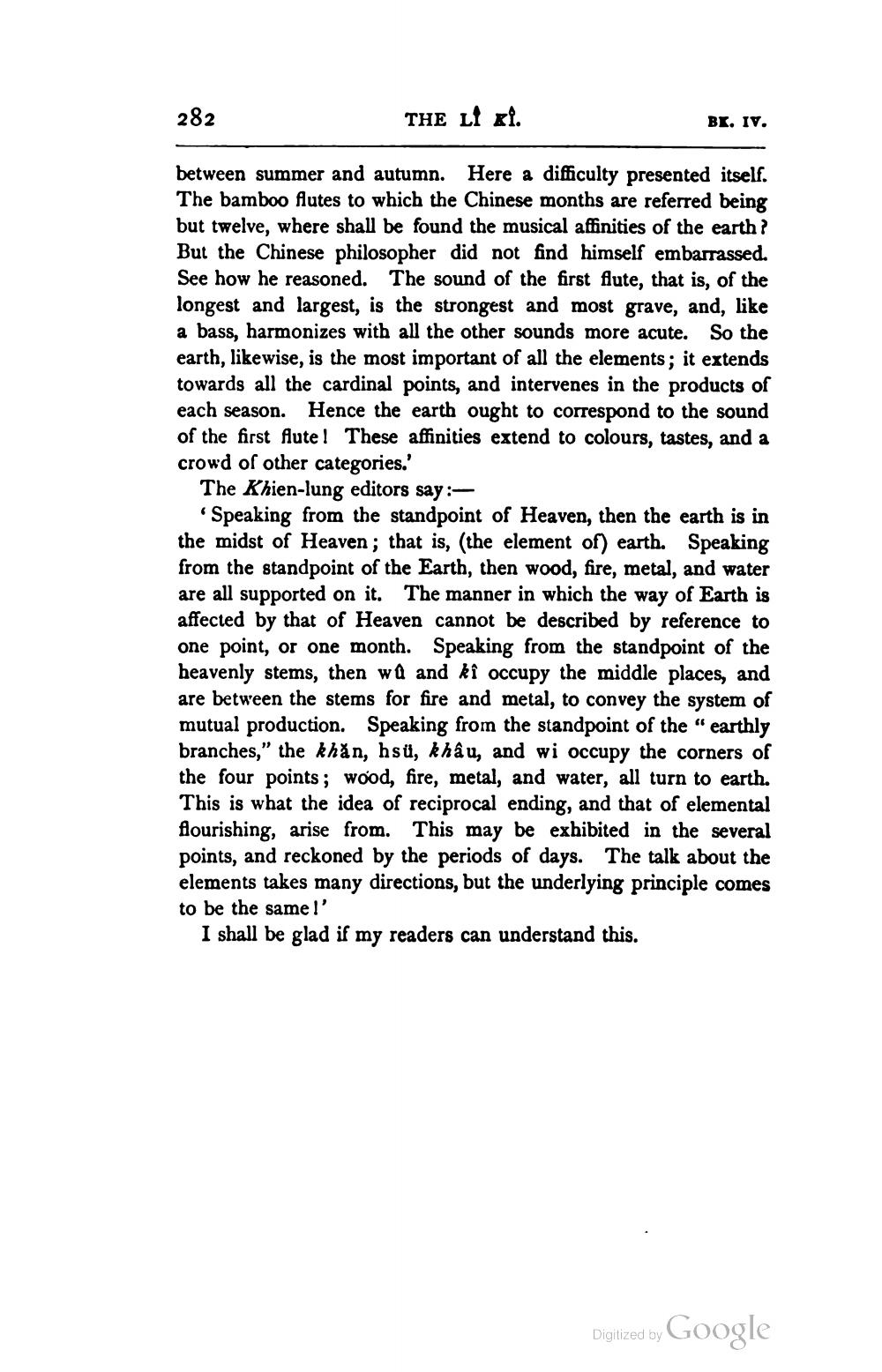________________
282
THE LI Kİ.
between summer and autumn. Here a difficulty presented itself. The bamboo flutes to which the Chinese months are referred being but twelve, where shall be found the musical affinities of the earth? But the Chinese philosopher did not find himself embarrassed. See how he reasoned. The sound of the first flute, that is, of the longest and largest, is the strongest and most grave, and, like a bass, harmonizes with all the other sounds more acute. So the earth, likewise, is the most important of all the elements; it extends towards all the cardinal points, and intervenes in the products of each season. Hence the earth ought to correspond to the sound of the first flute! These affinities extend to colours, tastes, and a crowd of other categories.'
BK. IV.
The Khien-lung editors say:
'Speaking from the standpoint of Heaven, then the earth is in the midst of Heaven; that is, (the element of) earth. Speaking from the standpoint of the Earth, then wood, fire, metal, and water are all supported on it. The manner in which the way of Earth is affected by that of Heaven cannot be described by reference to one point, or one month. Speaking from the standpoint of the heavenly stems, then wût and kî occupy the middle places, and are between the stems for fire and metal, to convey the system of mutual production. Speaking from the standpoint of the "earthly branches," the khăn, hsü, khâu, and wi occupy the corners of the four points; wood, fire, metal, and water, all turn to earth. This is what the idea of reciprocal ending, and that of elemental flourishing, arise from. This may be exhibited in the several points, and reckoned by the periods of days. The talk about the elements takes many directions, but the underlying principle comes to be the same!'
I shall be glad if my readers can understand this.
Digitized by
Google




